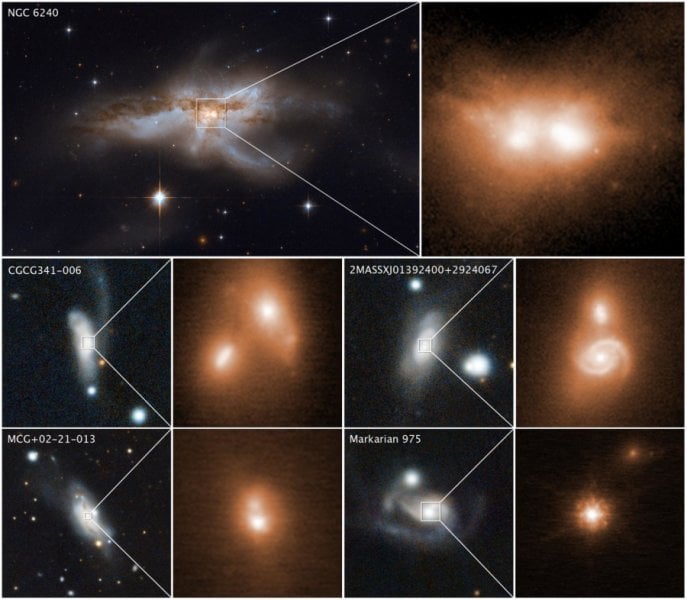A team of researchers believes a massive collision between the Large Magellanic Cloud (LMC) and our galaxy could send our solar system flying into space over the course of 2 billion years. However, there are a lot of scientific suggestions about exactly what could happen to the Milky Way.
Scientists have long believed our galaxy would die by merging with the Andromeda Galaxy in the distant future. However, a team of astrophysicists at the U.K.’s Durham University now propose that a massive collision with the Large Magellanic Cloud could disrupt our galaxy. They also see a small chance that the collision will send our solar system flying into space.
What may be even more shocking than this prediction is that the team suggests this collision could happen much sooner than the collision between the Milky Way and Andromeda galaxies, which is estimated to occur in 8 billion years.
Researchers suggest the collision with the Large Magellanic Cloud could be so strong that it might awaken the galaxy’s dormant supermassive black hole, which researchers say would devour the surrounding gas and grow by up to 10 times. While feeding on the surrounding gas, the black hole would emit high-energy radiation, which scientists say shouldn’t affect life on Earth if there is still any at that time. However, there is a small chance that the massive collision will send our solar system flying into space.
The findings were published today in the journal Monthly Notices of the Royal Astronomical Society. Scientists say larger galaxies are surrounded by smaller satellite galaxies orbiting around them in a way similar to how bees move around a hive. Researchers say that sometimes these galaxy fall into the center, resulting in a massive collision before the host galaxy devours the smaller galaxy.
The Large Magellanic Cloud is the brightest satellite galaxy in the Milky Way. Scientists believe it came to our galactic neighborhood about 1.5 billion years ago. They estimate its location at about 163,000 light years from the Milky Way.
Recent research has suggested that the Large Magellanic Cloud has twice as much dark matter than was previously measured. Because it has so much mass, researchers believe it is losing energy, which is why they think it could end up colliding with our galaxy. The team led by the Durham University’s Institute for Computational Cosmology worked with the University of Helsinki in Finland and used the EAGLE galaxy formation supercomputer to build a simulation which could predict the collision.
“While two billion years is an extremely long time compared to a human lifetime, it is a very short time on cosmic timescales,” lead author Dr. Marius Cautun said in a statement. “The destruction of the Large Magellanic Cloud, as it is devoured by the Milky Way, will wreak havoc with our galaxy, waking up the black hole that lives at its centre and turning our galaxy into an ‘active galactic nucleus’ or quasar. This phenomenon will generate powerful jets of high energy radiation emanating from just outside the black hole. While this will not affect our Solar System, there is a small chance that we might not escape unscathed from the collision between the two galaxies which could knock us out of the Milky Way and into interstellar space.”
The researchers added that the massive collision between the Large Magellanic Cloud and the Milky Way could be “spectacular.” Nevertheless, given the timeframe in which the collision could occur, scientists believe it’s unlikely that there will still be life on Earth at that time.












